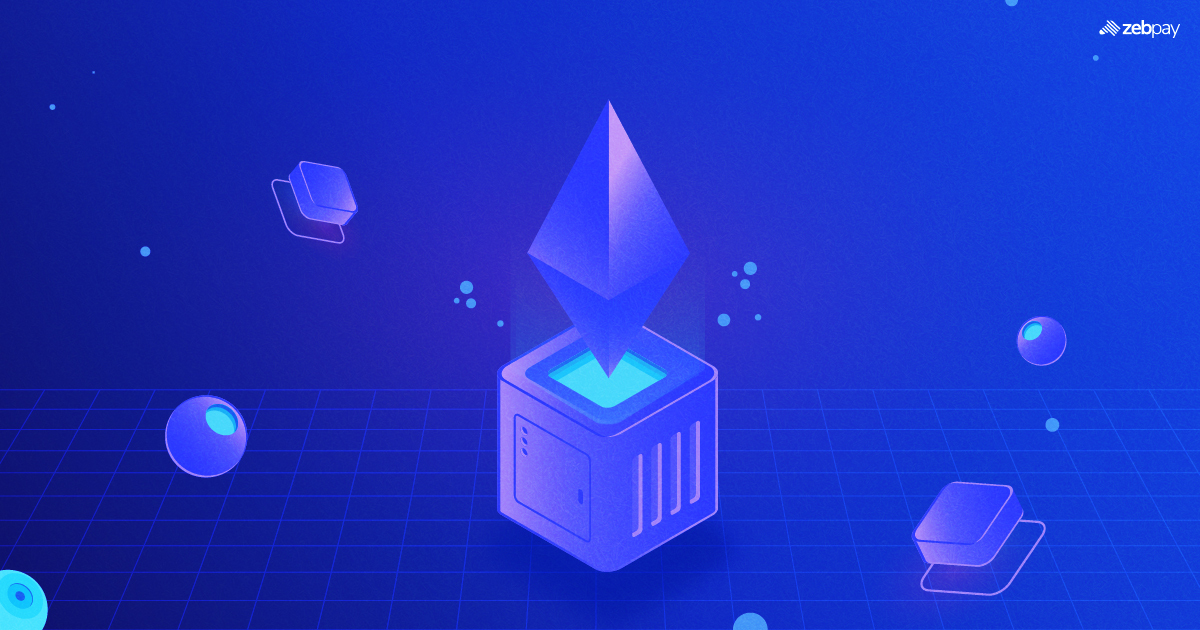Blockchain, crypto and NFTs, these topics are filling our news feeds. They are dominating the digital finance and art worlds. The ecosystem that enables this is the Ethereum blockchain. But what allows Ethereum to do this? The secret lies in the Ethereum Virtual Machine (EVM).
What is a Virtual Machine?
A virtual machine is a system that is spread across multiple devices. Unlike operating systems like Windows or macOS, it is built on top of the OS emulating a physical computer. This makes it very versatile, enabling it to be used on any device. This device is called a node. Since they can run on different types of hardware, they are perfect tools for a decentralised system.
Ethereum VMs allow you to break down geographical walls. If a system is part of the VM network, you can use its processing power regardless of location. The VM is like a “world machine”, which uses the power of all nodes in its network to carry out tasks. Thanks to this, you can create novel applications without centralised hardware.
How is the EVM Unique?
All blockchains operate on a virtual machine model. The most popular crypto in the world, Bitcoin also uses a VM to manage transactions. What sets the Ethereum Virtual Machine apart from other blockchains is its scope.
Read About: What Is Blockchain Layer?
The EVM is not simply a decentralised ledger, it is a smart contract-enabled blockchain. It enables you to create decentralised apps (dApps) using Ethereum. To do this, the machine requires additional layers of functionality. This second layer is known as the Distributed state machine.
Ethereum, along with storing account information, stores other data required for smart contracts. This is known as the machine state. The machine state changes with every block that gets added to the blockchain. It transitions from one state to another based on predetermined rules. These rules are defined by the Ethereum Virtual Machine.
Smart Contracts on the EVM
Smart contracts are simple agreements between parties. Instead of being defined through words, it is done through code. These contracts do not require any third party to supervise or execute them. Thus, it allows you to enter into agreements anonymously, with anyone around the world.
The EVM is essential in enabling these smart contracts. Instead of being a simple transaction, contracts are treated as accounts. These accounts are not controlled by users but operate based on how they are coded. When the rules are met, the contract automatically executes its function.
Smart contracts have a few special features that enable them to work. They are
- Deterministic – Every time a contract is given a set of inputs, it performs the same function. This is important so that contracts are not random and work as expected every time.
- Irreversible – Smart contracts cannot be reversed. Once you enter into a contract, there is no option of undoing the contract.
- Isolated – Contracts are isolated from the rest of the system. This is essential to ensure bugs or hacks in one contract do not affect the Ethereum network.
What Are Gas Prices?
Considering that the EVM is like a “World Machine”, what prevents someone from using it all the time? Since every machine has limited bandwidth, one person using it will result in less power for others. A system that does not have checks in place will result in misuse. This is where Gas prices are beneficial.
Any action on Ethereum is treated as a transaction. Gas prices are the fees required to make that transaction. Therefore, using the EVM is not free. When there is a higher load on the blockchain, these gas prices rise, discouraging others from performing more actions. The system adjusts itself to ensure more users can access the machine.
This also promotes more efficient contracts. Every contract requires some time to execute its code. The more time it takes, the more resources and gas it uses. Entering into contracts that take too long to complete means the gas prices are much higher. Efficient contracts have low gas prices and make the entire Ethereum network more efficient.
Disadvantages of the EVM
While the Ethereum Virtual Network enables developers to create unique experiences for users, it also has its downsides –
- Parts of the Network are Centralised – Many Ethereum nodes are on centralised cloud services like Amazon Web Services. If the service provider has an outage and all cloud computers are down, fewer nodes will be available to carry out actions.
- High gas prices – When there is high demand and network usage, gas prices can rise significantly. Those making small transactions must wait until gas prices are lower. This is also a problem for smart contracts, as their functioning can be much slower when the fee is high.
- Technical Knowledge – The EVM is not user-friendly. You need to have programming experience to create something with the EVM. Some attempts have been made to make it easier for regular users to interact with Ethereum’s tools, like simple NFT creation. However, the network is still restricted to those who can code.
Final Thoughts
The Ethereum Virtual Machine is one of the most powerful tools to create unique experiences today. Along with enabling transactions, it also allows you to create smart contracts and enter agreements without geographical boundaries. But this system is not perfect. High gas prices and lack of decentralisation threaten the smooth running of the EVM. Only after these issues are sorted out can the EVM be considered a full-proof system.

